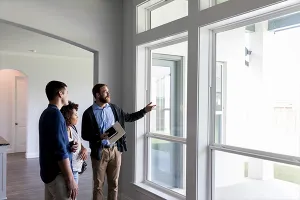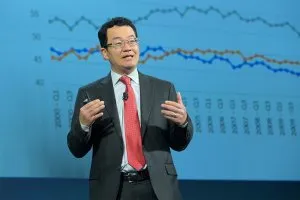Commercial market fundamentals marched to a steadier beat during 2016 compared with the investment environment. Demand for properties remained solid throughout the year, leading to declining vacancies and rising rents. There were, however, variations in each property sector.
As professional and business services contributed the highest number of net new jobs in 2016, office-using industries drove demand for office space. Office net absorption totaled 26.9 million square feet in the first three quarters of the year, complemented by another 13.0 million square feet in the last quarter, based on data from CBRE. Even with 37.1 million square feet of new supply, office vacancy declined to 12.9 percent by year-end, the lowest level in eight years. Rents for office properties rose 6.0 percent during the year, the fastest annual pace since 2007, reaching $31.6 per square foot by the fourth quarter.
Riding the winds of rising imports and growing online commerce, industrial properties maintained a sustained pace in 2016. Net absorption totaled 251.3 million square feet during the year, based on data from CBRE. Construction of industrial space, while accelerating, did not keep up with demand—completions totaled 178.7 million square feet. National vacancies for industrial buildings dropped to 4.7 percent by the fourth quarter, resulting in surging rent growth. Net asking rents increased 6.3 percent over the year, to $6.6 per square foot by year-end, the highest change since 2007.
Retail fundamentals benefited from growing consumer spending and confidence, posting declining vacancies and rising rents. Net absorption for retail properties totaled 74.8 million square feet in 2016, outpacing by a wide margin the 51.5 million square feet of new completions, according to CBRE. The retail availability rate declined slightly during the first two quarters, but flattened out in the latter half of the year, at 7.1 percent. National retail rents continued advancing in 2016, marking 12 consecutive quarters of growth. The net asking rents reached $16.6 per square foot by the end of the year.
Household formation gains kept demand for multifamily properties on an upward path in 2016. However, accelerating supply of new apartment units began to add downward pressure on rents during the year. Multifamily net absorption reached 201,000 units by the end of the year, a 4.9 percent increase from 2015, according to data from CBRE. Completions picked up the pace, jumping by a sharp 21.4 percent from the prior year, to a total of 242,800 units. With supply outpacing demand, vacancies rose to 4.9 percent by the fourth quarter of 2016, a 30 basis-point upward change. Multifamily rents inched up slightly, rising 0.2 percent for the year.
Underpinning these fundamentals, commercial asset cash flow continued on an upward trend. Based on the REALTORS®Commercial Real Estate Lending Trends 2017 report, net operating income (NOI) increased for 67 percent of respondents. For 40 percent of REALTORS®, NOI increased in the 1 – 4 percent range. For 19 percent of respondents, NOI rose between 5 – 9 percent, while for 8 percent of commercial practitioners, the increase in NOI occurred in the 10 – 25 percent range.

According to the 2016 data, the increase in NOI picked up speed from the trends of the past few years. The percentage of REALTORS® who reported “No Change” in NOI declined from an average of 32 percent in 2015, and 29 percent in 2016, to 25 percent this past year.
For more information and the full report, access NAR’s Commercial Real Estate Lending Trends 2017.








